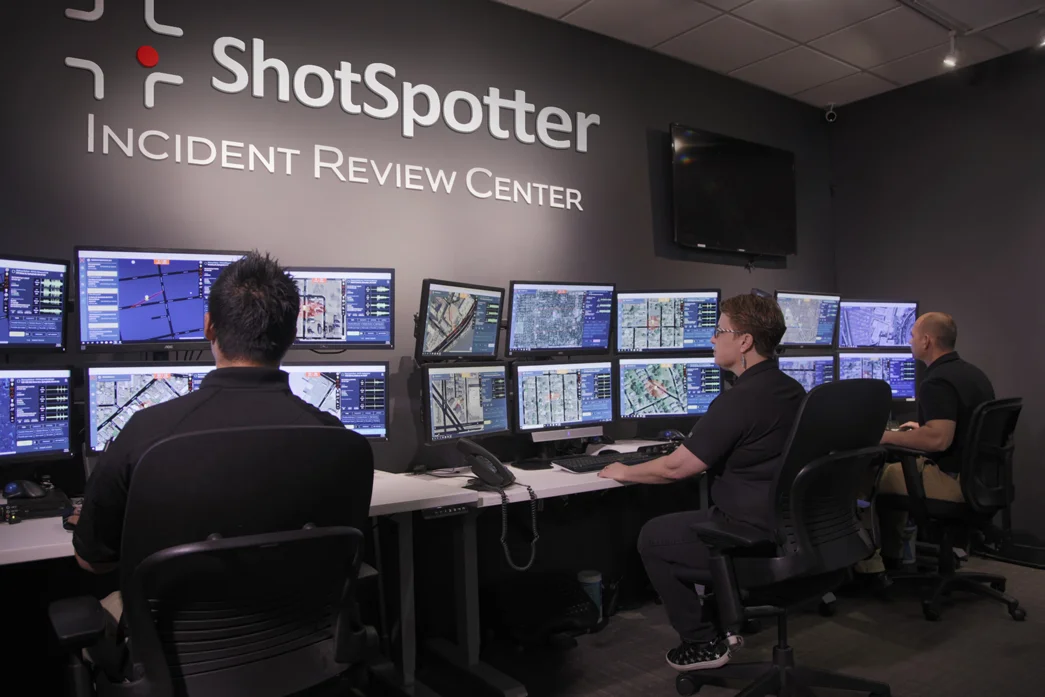Drones are growing increasingly popular with law enforcement agencies across the United States. As of 2022, over 1,000 police departments in the United States used drones, and according to the FAA, that number will reach over 30,000 by 2025. In the public safety sector, drones are a valuable tool that can be leveraged with other technologies to assist with mission-critical tasks. In this blog, we will discuss how drone integration with gunshot detection and ALPR can better assist law enforcement departments with response and investigative efforts.
How Gunshot Detection and Drone Systems Can Work Together to Better Assist First Responders
We’ve discussed the benefits of gunshot detection systems at length, starting with the fact that they help bridge the gap surrounding the chronic underreporting of gunfire. A gunshot detection system like ShotSpotter notifies police departments of the precise location of gunfire and contextual data such as high-capacity magazines, fully automatic gunfire, and the number of rounds fired. This enables first responders to arrive on the scene faster and with better situational awareness.
ShotSpotter’s open NAPI interface can integrate with drone systems and provide GPS coordinates for the location of gunshots. If a Drone as First Responder (DFR) program can be pre-deployed near ShotSpotter coverage areas, the drone can arrive at the incident in a short period of time and provide real-time video to police agencies. This, in turn, can help departments refine their tactical strategy, including the size and speed of police response, ultimately improving public safety outcomes.
Furthermore, for under-resourced departments navigating high volumes of gunfire, leveraging a gunshot detection system like ShotSpotter with a DFR program can help agencies prioritize calls for service and generally improve departmental efficiency. With the video footage from the drone, police can better determine if a location where gunfire occurred poses an ongoing threat (such as active shooters or a visible gunshot wound victim at the scene), and intelligently prioritize calls for service accordingly.
Now that we’ve established how integrating a gunshot detection system and a drone system can help assist first responders, let’s review how gunshot detection technology and ALPR technology can work with drone systems to help agencies and real-time crime centers with their investigative efforts.
How Gunshot Detection, ALPR, and Drones Can Expedite Investigations
To better understand how these three systems can work together effectively, let’s first discuss PlateRanger, an AI-based license plate and vehicle recognition system powered by Rekor®.
PlateRanger has an open NAPI interface that can integrate with a real-time crime center, a gunshot detection system, and a drone system. Still, even on its own, it offers many investigative benefits. The system uses machine learning and artificial intelligence to provide accurate vehicle information and its patented technology provides high-quality, high-accuracy night captures when most crimes occur. Additionally, video clips, location maps, crime travel patterns, and integrated real-time alerts on stolen vehicles, BOLOs, and other safety messages can improve investigative leads.
These investigative benefits continue to increase when integrated with ShotSpotter’s gunshot detection system and a drone system. For example, if a drone is dispatched to the precise location of a ShotSpotter gunfire alert and provides video footage of a vehicle at the scene, police personnel can use the PlateRanger advanced search feature to identify a vehicle from a description of make, model, type, color, direction of travel, or partial plate number. This will expedite an investigation, as a review of LPR cameras will likely reveal only a handful of cars (or even less) that fit such a vehicle description surrounding the time and location of the crime. Once the license plate for the suspect vehicle is narrowed down and identified, investigators can query LPR data against integrated hotlists such as NCIC stolen vehicle, arrest warrants, BOLO, and other connected data.
In the context of a gun crime investigation, this data can be extremely helpful. For example, thanks to ShotSpotter’s locational accuracy, investigators are far more likely to locate shell casings at the scene that can be entered into the NIBIN database. A potential NIBIN match and insights gathered from fully identifying a suspect vehicle, provide police departments and real-time crime centers with additional investigative avenues that can more effectively expedite investigations.
PlateRanger ALPR and real-time drone video can provide yet another layer of insight and visual evidence that assists investigative teams with identifying perpetrators and improving officer and public safety.
Leverage Force Multiplying Technology for Optimal Public Safety Outcomes
Under-resourced agencies navigating high volumes of gun crime need to leverage force-multiplying technology now more than ever before. Contact SoundThinking today to discuss integrating gunshot detection technology and/or an AI-based vehicle and license plate recognition system with a drone system to more efficiently allocate resources, improve situational awareness, expedite investigations, and improve public safety outcomes.





